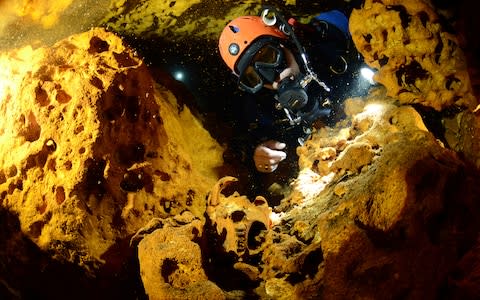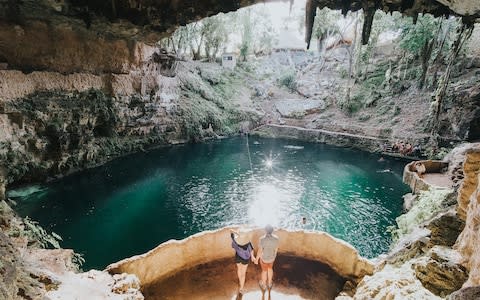The world's longest underwater cave has been found in Mexico

The search for the world's most extreme measurements - biggest, highest, tallest - tends to focus above ground, gazing at towering mountains and epic canyons.
But the latest global peak statistic has come from under the soil, in the subterranean depths of Mexico's Yucatan Peninsula.
There, in the famously porous terrain above which the Mayan civilisation once thrived, is what is now considered to be the planet's longest underwater cave system.

This is not, technically, an uncovering of a new wonder - more a joining of dots.
In recent days, divers have confirmed what had been suspected for a while - that the Sistema Sac Actun (a submerged labyrinth which stretches out for 164 miles) and the Dos Ojos system (shorter, but still impressive at 52 miles in length) are one and the same thing, connected by a previously unsurveyed channel.

Together, this pair of vast limestone wormholes add up to 216 miles of below-the-surface space - a number which makes their combined size greater than that of the Sistema Ox Bel Ha (also in eastern Mexico; 168 miles), which was previously thought to be the yardstick for underwater networks.

The discovery is the result of years of hard work by Gran Acuifero Maya, a project which focuses on the study and preservation of the subterranean waters of the Yucatan.

The finding has been described as "amazing" by Guillermo de Anda, who is both the director of Gran Acuifero Maya and an underwater archaeologist.

He says that expanded knowledge of the cave system will allow for a greater understanding of the Maya people, who thrived in the region before prior to the Spanish conquest of Central and South America in the 16th century.
"It allows us to appreciate much more clearly how the rituals, the pilgrimage sites and ultimately the great pre-Hispanic settlements that we know emerged," he told Reuters.

The Maya held the "cenotes" - giant sinkholes - of their region in high esteem, regarding them as holy sites and portals to communication with the gods.
Religious objects and human skeletons have been found at the bottom of some of these sinkholes, including the Sacred Cenote at the historic city of Chichen Itza - leading to the theory that they were used by the Maya for human sacrifice.

One of the Yucatan Peninsula's biggest sinkholes is the Gran Cenote - which sits three miles west of the popular tourist town, Tulum. This is also part of the Sistema Sac Actun, and has been used as a gateway for divers charting its many twists and turns.

This is not the first time this watery maze - whose name translates from Spanish and Yucatec Maya as "White Cave System" - has been found to have hidden contours.
In 2007, it was revealed that the Sistema Nohoch Nah Chich, previously thought to be separate, was also linked to the Sistema Sac Actun.
It is not, however, the longest cave system in the world.

While its size makes Sistema Sac Actun the longest underwater cave network, the longest on the planet is the Mammoth Cave complex - which is riddled into the hillsides of southern Kentucky, and is thought to extend for 405 miles.

